Overview
In the competitive landscape of wholesaling, businesses face significant challenges in attracting and retaining clients. To overcome these hurdles, it is essential to prioritize user experience, integrate key features, and implement effective marketing strategies. A successful wholesaling website must incorporate:
- Intuitive navigation
- Secure account management
- Tailored pricing options
All of these significantly enhance client satisfaction and drive sales. Furthermore, the importance of SEO and content marketing cannot be overstated, as these elements are crucial for increasing website traffic and visibility. By focusing on these essential components, businesses can create a robust online presence that not only meets client needs but also positions them for long-term success.
Introduction
Crafting a successful wholesaling website transcends the mere establishment of an online store; it demands the creation of a robust platform tailored specifically for bulk buyers. With the wholesale eCommerce market projected to reach staggering heights, it is imperative to understand the essential features and strategies that drive sales while enhancing user experience.
In a competitive landscape, how can businesses ensure their website not only attracts but also retains clients? This article delves into the key steps necessary to build a wholesaling website that stands out, engages users, and ultimately fosters growth.
Understand the Basics of Wholesaling Websites
Wholesaling websites serve as pivotal online platforms where businesses sell products in bulk to retailers and other enterprises at significantly reduced prices. Unlike traditional retail websites, these wholesaling websites emphasize bulk transactions and often require user logins to access wholesale pricing. Understanding the target audience—primarily retailers seeking cost-effective purchasing options—is crucial. Moreover, recognizing the importance of user experience and streamlined purchasing procedures can profoundly impact client satisfaction and loyalty.
User experience (UX) is paramount in client retention within the eCommerce landscape. A well-crafted wholesaling website can dramatically enhance client satisfaction by offering intuitive navigation, advanced search functionalities, and personalized account management tools. Research indicates that effective online design can double sales for both retail and wholesale enterprises, while poor design may deter up to 90% of potential clients. The wholesale eCommerce market, valued at $12.2 trillion in 2019, highlights the necessity of investing in effective design for a wholesaling website to achieve sustainable growth.
Integrating features such as saved order lists, flexible transaction methods, and tiered pricing based on quantities can simplify the purchasing process, empowering clients to make informed choices. Notably, there has been a significant shift from traditional payment methods to digital B2B payments, reflecting evolving preferences among wholesale customers. For instance, enabling clients to view and reuse saved orders not only streamlines bulk purchasing but also facilitates effective inventory management.
Expert opinions underscore the necessity of aligning design with the specific needs of wholesale buyers when using a wholesaling website. A seamless and intuitive journey from product selection to checkout is essential to prevent delays that may frustrate clients eager to make a purchase. Integrating online platforms with back-end systems such as ERP, PIM, and CRM is vital for cohesive data management and operational efficiency. By prioritizing user-centric design and functionality, wholesalers can cultivate an engaging online experience that nurtures loyalty and promotes repeat business. Furthermore, showcasing case studies and client narratives on wholesale platforms can significantly influence B2B buying decisions, further enhancing engagement.
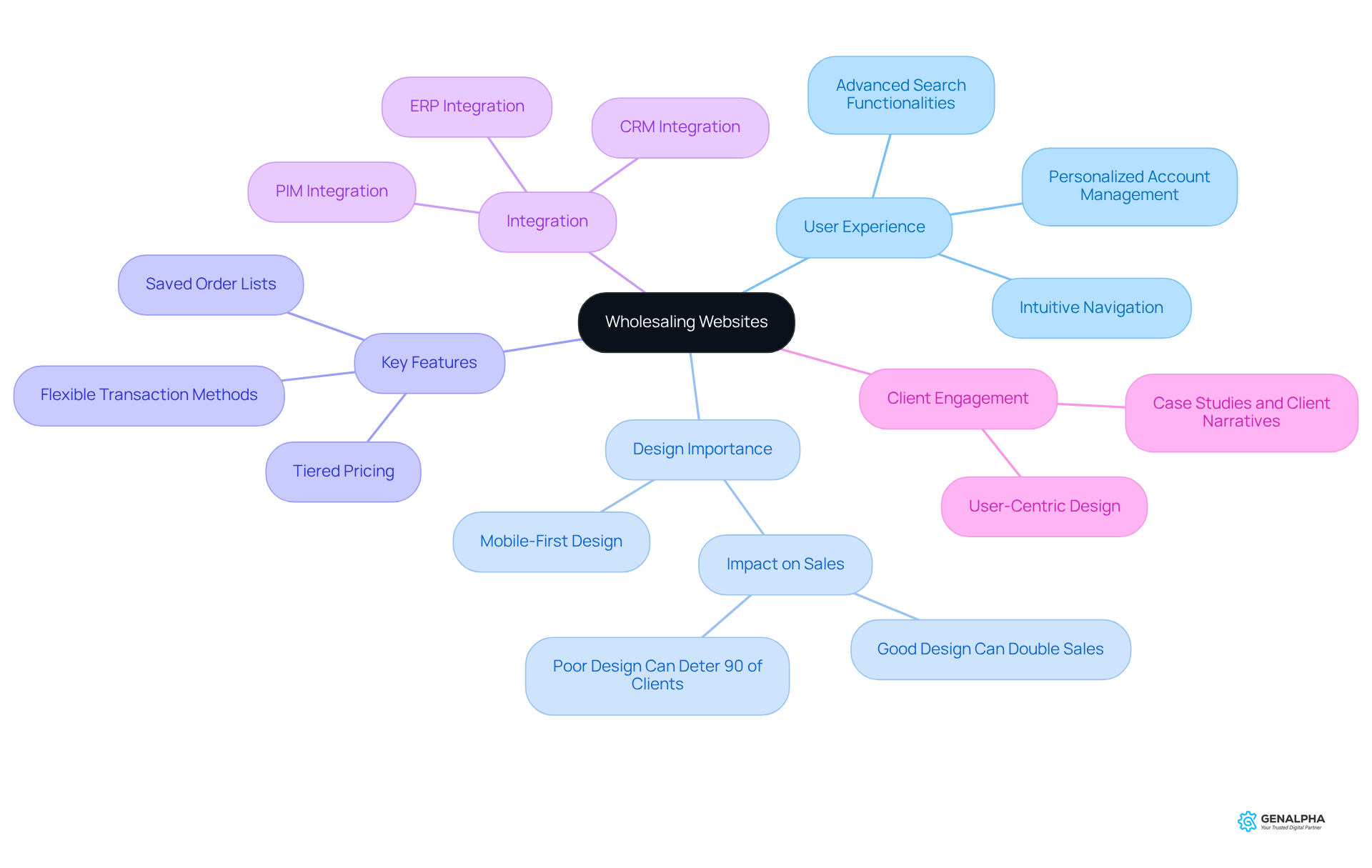
Identify Key Features for Your Wholesaling Website
Key features of a successful wholesaling website are pivotal for overcoming industry challenges and enhancing user experience:
-
User-Friendly Navigation: A streamlined navigation system is essential for helping users quickly locate products and information. A wholesaling website that features intuitive layouts and clear categories significantly improves visitor experience, leading to higher conversion rates. Notably, companies prioritizing customer experience design have reported conversion rates increasing by as much as 400%. Furthermore, 94% of users evaluate a website based on its design, underscoring the critical nature of aesthetics in user-friendly navigation.
-
Secure Login and Account Management: Implementing secure login systems empowers users to create accounts, facilitating easier repeat purchases. Research indicates that secure login features can enhance sales by fostering trust and simplifying the purchasing process. This aspect is particularly crucial in B2B settings, where a wholesaling website can enhance repeat transactions, as trust plays a vital role in client retention.
Providing bulk ordering capabilities on a wholesaling website is essential for wholesalers. Features that enable users to efficiently order large quantities not only streamline the purchasing process but also encourage larger transactions. For example, companies offering tiered pricing based on order volume can incentivize clients to purchase more, ultimately increasing average order values.
-
Detailed Product Information: Comprehensive product descriptions, high-quality images, and specifications are vital for assisting buyers in making informed choices. Effective product information on a wholesaling website significantly reduces return rates and enhances buyer satisfaction, as purchasers feel more confident in their decisions. This highlights the necessity of delivering detailed product information to enrich the overall shopping experience.
-
Custom Pricing and Discounts: Tailored pricing models based on order volume can motivate clients to increase their purchases. Implementing tiered pricing strategies on a wholesaling website allows businesses to meet diverse customer needs while maximizing revenue potential. This approach has proven effective in driving sales, as evidenced by companies that have successfully integrated such features into their eCommerce platforms.
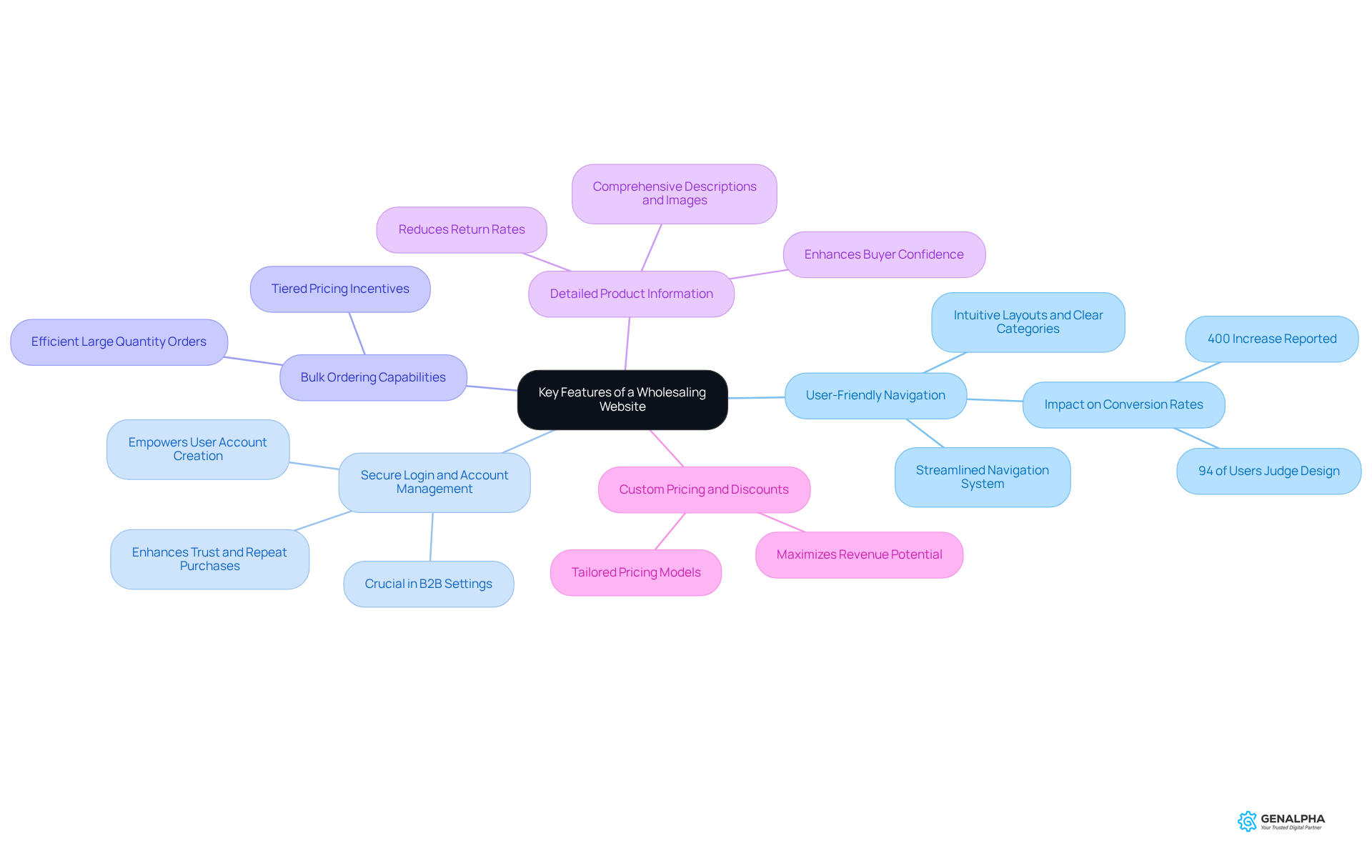
Choose the Right E-Commerce Platform
Choosing the right e-commerce platform is essential for your wholesaling website to achieve long-term success in today's competitive landscape. With the wholesale e-commerce market projected to soar to $4.32 trillion by 2025 and 90% of B2B sales anticipated to transpire through digital platforms, scalability is a critical factor. A platform that can grow alongside your business is not just beneficial; it’s necessary for managing increased traffic and expanding product lines.
Customization options also play a pivotal role. Opt for platforms that provide extensive customization capabilities, allowing you to tailor your site to meet specific operational needs. This enhances user experience and engagement, positioning platforms like BigCommerce and Shopify Plus as leaders in robust customization features.
Moreover, integration capabilities cannot be overlooked. Ensure the platform seamlessly integrates with your existing ERP systems and other essential tools, as this integration is vital for maintaining operational efficiency and data accuracy. For example, Adobe Commerce excels in offering strong integration options with various business systems.
User support is another critical aspect to evaluate. The quality of assistance provided by the platform can significantly impact your ability to resolve issues swiftly and maintain smooth operations. Shopify, for instance, is known for its 24/7 customer support, a crucial factor for businesses that rely on uninterrupted service.
Lastly, consider the cost, encompassing both upfront and ongoing expenses, including transaction fees. Understanding the total cost of ownership will empower you to make an informed decision that aligns with your budget.
By focusing on these key factors, you can select a wholesaling website that not only meets your current needs but also supports your growth in the competitive wholesale landscape.
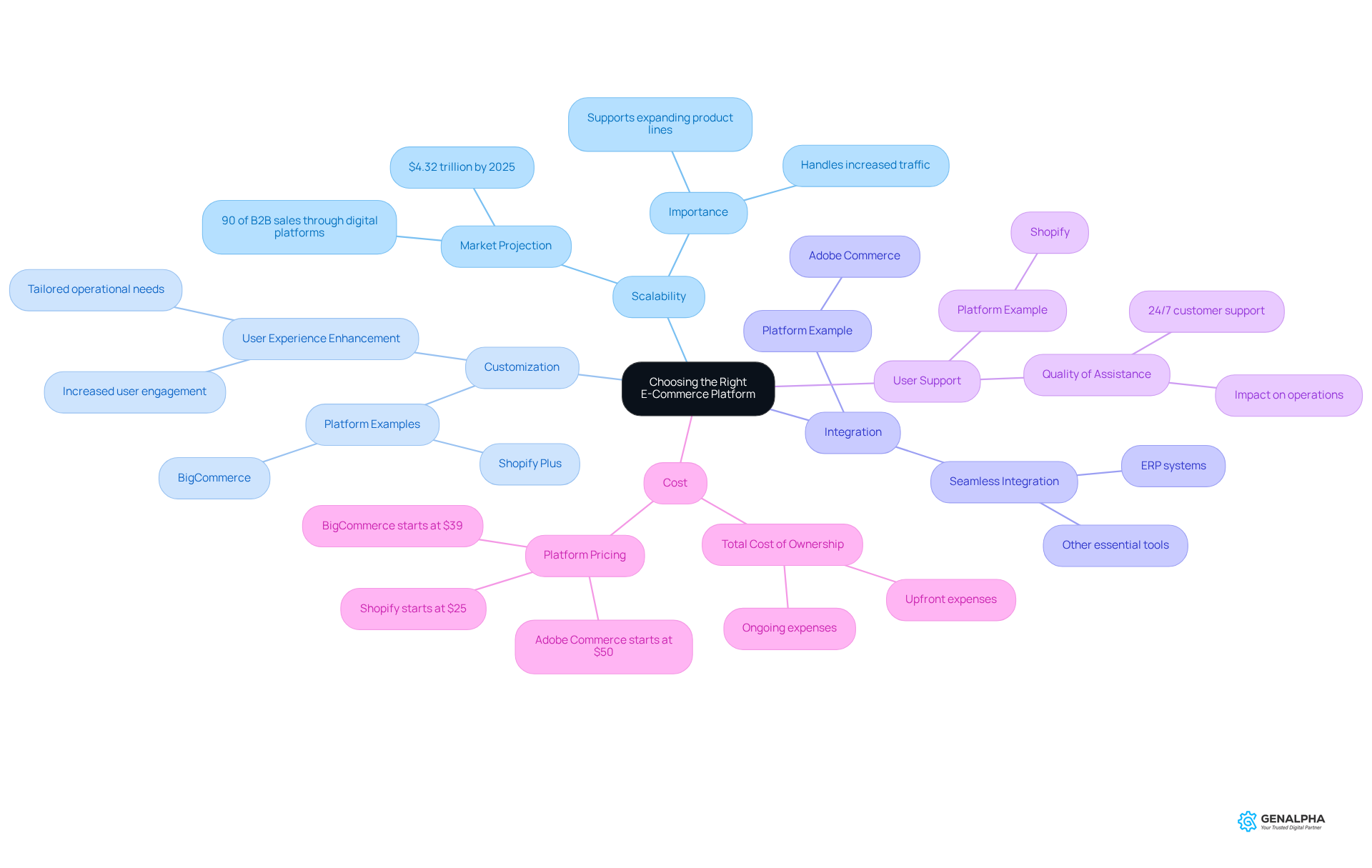
Design an Engaging User Experience
To design an engaging user experience, it is crucial to address the challenges that hinder effective interaction with digital platforms.
- Simplify Navigation: Implementing clear categories and filters is essential for facilitating quick product discovery. This ensures users can easily find what they need, enhancing their overall experience.
- Optimize for Mobile: With nearly 70% of web traffic originating from mobile devices, it is imperative that the website is fully responsive and performs seamlessly on smartphones and tablets. Research indicates that 53% of mobile visitors will abandon a site if a page takes longer than three seconds to load. Furthermore, 79% of shoppers experiencing site performance issues report they will not return to make a purchase, underscoring the critical need for effective mobile optimization.
- Fast Loading Times: Prioritizing quick page loads by optimizing images and scripts is vital. Studies show that for every second of delay in loading time, conversion rates can plummet by up to 20%. Striving for load times under three seconds on desktop and five seconds on mobile minimizes bounce rates and maximizes engagement. Utilizing a Content Delivery Network (CDN) can enhance site speed by up to 30%, significantly improving performance.
- Clear Calls to Action: Prominent buttons for actions such as 'Add to Cart' and 'Checkout' are necessary to guide users through the purchasing process. Effective design in this area can substantially boost engagement and conversion rates.
- Personalization: Incorporating features that provide tailored recommendations based on individual behavior enhances client satisfaction and encourages repeat visits. Users are more likely to engage with content that aligns with their preferences, making personalization a key element in fostering lasting relationships.
In conclusion, addressing these aspects is essential for creating an engaging user experience that not only meets but exceeds user expectations.
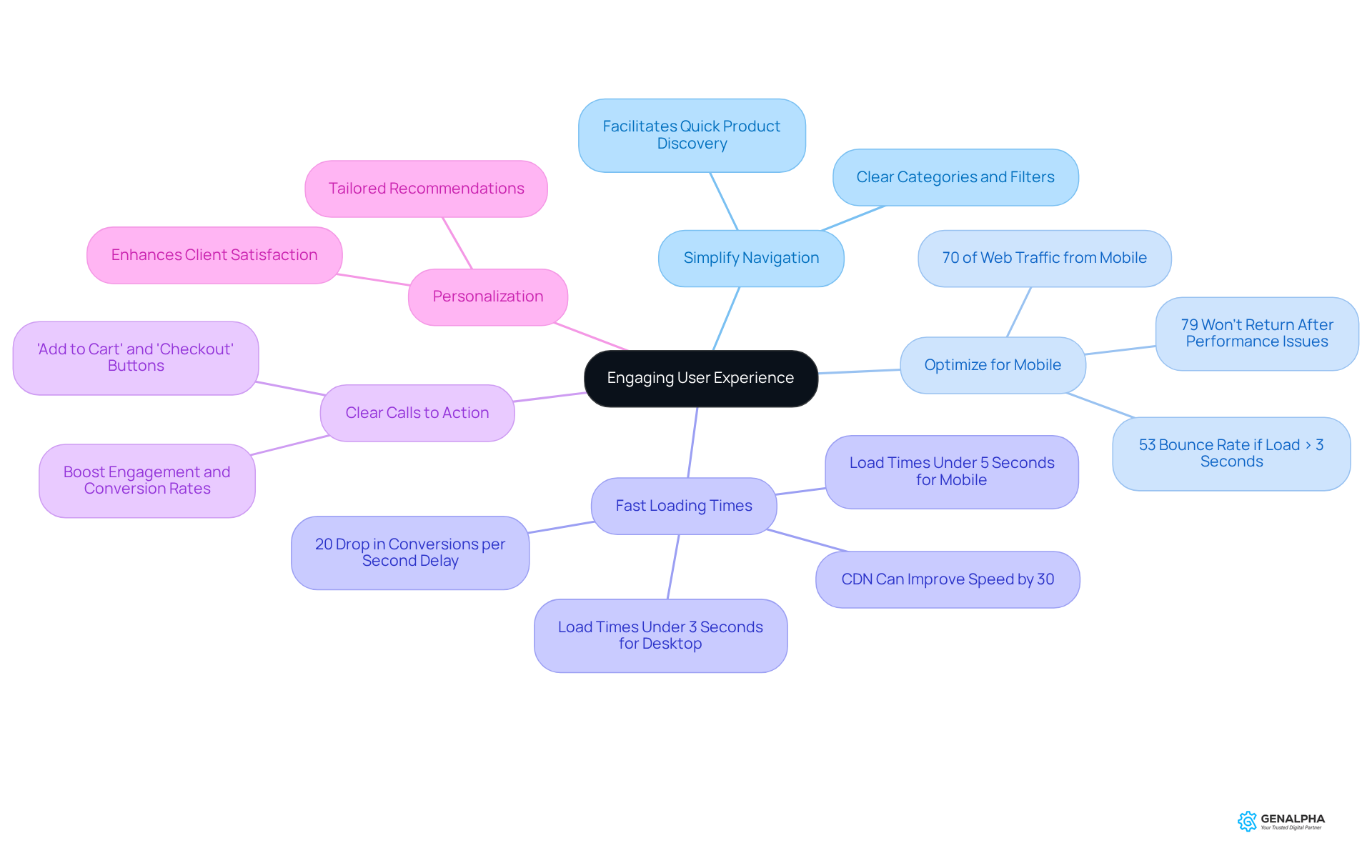
Integrate Payment and Logistics Solutions
To navigate the complexities of payment and logistics integration effectively, businesses must adopt strategic approaches that address critical challenges in the industry.
-
Choose Secure Payment Gateways: Selecting reliable payment processors such as PayPal, Stripe, or Square is vital for safeguarding transactions and building customer trust. Notably, 81% of consumers prefer making purchases directly from merchants' websites, underscoring the necessity of a secure transaction process for conversion. Additionally, data privacy and cybersecurity remain paramount concerns in the gateway market, with 48% of participants expressing apprehensions about safeguarding digital information.
-
Automate Order Fulfillment: The implementation of logistics software that automates shipping and tracking processes can significantly enhance client satisfaction. Timely deliveries and reduced human error are essential, as research indicates that companies optimizing their transaction processes can boost conversion rates by 10-15%. Furthermore, checkout processes exceeding 90 seconds can lead to a 47% reduction in conversion rates, highlighting the critical need for efficiency.
-
Provide Multiple Financial Options: Catering to diverse customer preferences is crucial; offering various transaction methods can meet this demand. Studies reveal that 48% of consumers consider multiple payment options essential when making a purchase. Such flexibility can help lower cart abandonment rates, often caused by limited transaction options. Significantly, 75% of consumers express a desire to use their preferred payment method while shopping, emphasizing the importance of accommodating these preferences.
-
Implement Real-Time Inventory Management: Utilizing systems that update inventory levels in real-time is essential to prevent overselling and stockouts. This approach not only enhances operational efficiency but also improves user experience by ensuring product availability.
By focusing on these strategic areas, wholesalers can create a seamless shopping experience on their wholesaling website that meets client expectations and drives sales growth.
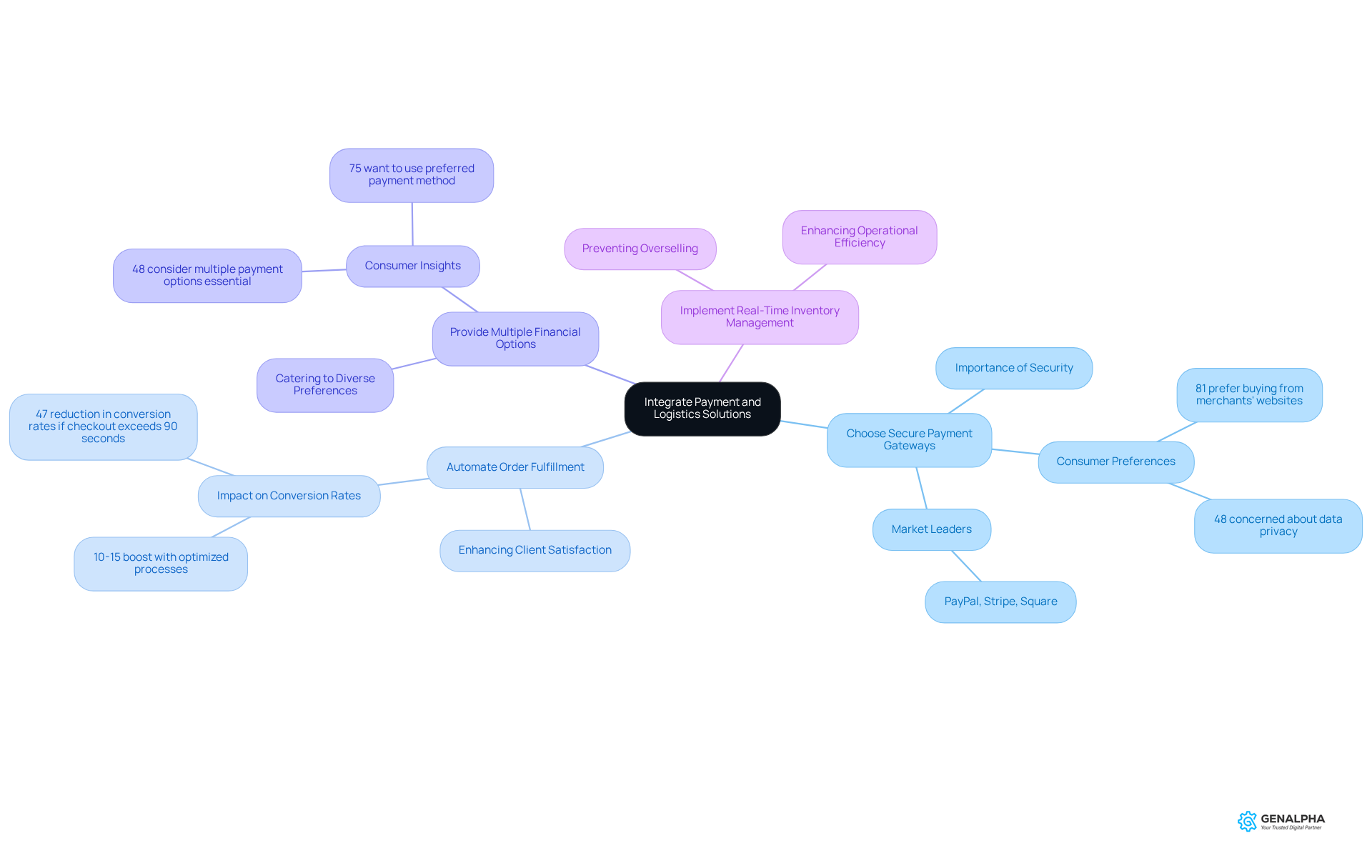
Implement Marketing Strategies to Drive Traffic
To effectively drive traffic to your wholesaling website, implementing robust strategies that address current industry challenges is essential. One key approach is Search Engine Optimization (SEO), which enhances your website's visibility on search engines, thereby attracting organic traffic. By optimizing your site, you position your brand to reach potential clients actively searching for your services.
Another vital strategy is Content Marketing. Creating valuable content that speaks to the needs and pain points of your target audience not only establishes your brand as an authority but also fosters trust among potential clients. This positions your business as a go-to resource on a wholesaling website in the sector.
Social Media Marketing is also crucial. Platforms like LinkedIn and Facebook offer the opportunity to engage directly with potential wholesale clients, allowing you to build relationships and promote your offerings effectively. By sharing insights and updates, you can keep your audience informed and engaged.
Furthermore, Email Marketing remains a powerful tool. By developing a targeted email list, you can dispatch campaigns that inform clients about new products, promotions, and relevant industry news. This direct line of communication helps maintain your brand's presence in the minds of your audience.
Lastly, consider Attending Trade Shows. Participating in industry events not only allows for networking but also provides a platform to promote your website directly to potential customers. Engaging face-to-face can significantly enhance your outreach efforts and foster lasting business relationships.
By integrating these strategies, you can effectively enhance your website's traffic and establish a strong presence in the wholesaling market.
![]()
Conclusion
Building a successful wholesaling website is not just a task; it is a strategic imperative that requires an in-depth understanding of the unique dynamics of the wholesale market. By prioritizing user experience, integrating essential features, and selecting the right e-commerce platform, businesses can create an online presence that effectively addresses the needs of their target audience. A well-designed wholesaling website transcends being a mere digital storefront; it serves as a powerful tool that fosters client engagement, loyalty, and ultimately, sales growth.
The article underscores key arguments that highlight the necessity of user-friendly navigation, secure account management, and comprehensive product information. These elements are vital for ensuring a seamless purchasing experience. Furthermore, the integration of effective payment solutions and robust marketing strategies is crucial for driving traffic and enhancing operational efficiency. By emphasizing these components, businesses not only retain customers but also position themselves for sustainable success in an increasingly competitive landscape.
In conclusion, the importance of investing in a high-quality wholesaling website cannot be overstated. As the wholesale e-commerce market continues to expand, businesses must adopt best practices and innovative strategies to thrive. By focusing on user experience and leveraging effective marketing techniques, wholesalers can unlock their full potential and establish a commanding presence in the digital marketplace.
Frequently Asked Questions
What are wholesaling websites?
Wholesaling websites are online platforms where businesses sell products in bulk to retailers and other enterprises at significantly reduced prices, emphasizing bulk transactions and often requiring user logins to access wholesale pricing.
Who is the target audience for wholesaling websites?
The primary target audience for wholesaling websites consists of retailers seeking cost-effective purchasing options.
Why is user experience important for wholesaling websites?
User experience (UX) is crucial for client retention as a well-designed wholesaling website can enhance client satisfaction through intuitive navigation and streamlined purchasing procedures, which can significantly impact sales.
What are some key features of a successful wholesaling website?
Key features include user-friendly navigation, secure login and account management, bulk ordering capabilities, detailed product information, and custom pricing and discounts.
How does user-friendly navigation affect a wholesaling website?
Streamlined navigation helps users quickly locate products and information, leading to improved visitor experience and potentially higher conversion rates.
What role does secure login play in wholesaling websites?
Secure login systems enable users to create accounts, fostering trust and simplifying repeat purchases, which is particularly important in B2B settings.
Why is providing bulk ordering capabilities important?
Bulk ordering capabilities streamline the purchasing process and encourage larger transactions, which can increase average order values.
What type of product information should be provided on wholesaling websites?
Comprehensive product descriptions, high-quality images, and specifications are vital for helping buyers make informed choices and reducing return rates.
How can custom pricing and discounts benefit wholesalers?
Tailored pricing models based on order volume can motivate clients to increase their purchases, maximizing revenue potential and meeting diverse customer needs.




